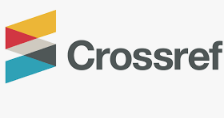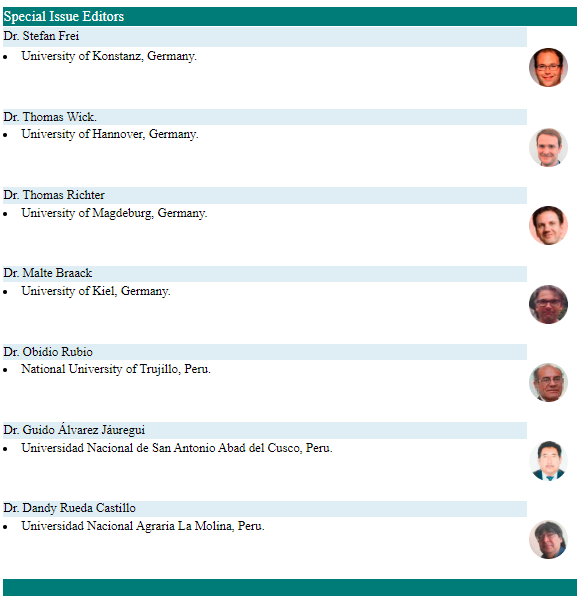The energy allocation toward life-history functions: Link between the individual and population levels
DOI:
https://doi.org/10.17268/sel.mat.2025.01.11Keywords:
Life history, energy allocation, discrete time model, optimal controlAbstract
The population dynamics of organisms are strongly influenced by life-history strategies that result from the optimal allocation of energy to vital functions such as growth, reproduction, and survival.
These strategies, characterized by phenotypic traits, emerge as evolutionary adaptations to specific ecological conditions and define functional trade-offs relevant facing biotic and abiotic pressures. The aim of this study is to examine the link between life history and population dynamics from a bioenergetic perspective, articulating individual and population-level processes through mathematical models that capture adaptive decisions in simulated environments described in terms of constant, decreasing, and periodic resource availability over time. Using a discrete-time mathematical model with two state variables, internal energy and survival probability, energy allocation toward reproduction and foraging is incorporated in order to determine the optimal strategy that maximizes the net reproductive rate. To solve this control problem, Pontryagin’s maximum principle is applied, using the forward–backward method to obtain optimal trajectories of allocation, energy, and survival. These trajectories are analyzed with respect to relevant physiological parameters under different scenarios of resource availability, thereby allowing the exploration of how environmental conditions influence the bioenergetic decisions of organisms.
References
Stearns SC. The Evolution of Life Histories. Annual Review of Ecology and Systematics. 1992;23:1-29.
Partridge L, et al. The ecological context of life history evolution. Science. 1988;241(4872):1449-55.
Stearns SC. Life history evolution: successes, limitations, and prospects. Naturwissenschaften. 2000;87(11):476-86.
Stearns SC. Trade-offs in life-history evolution. Functional Ecology. 1989;3(3):259-68.
Stearns SC. The evolution of life history traits: A critique of the theory and a review of the data. Annual Review of Ecology and Systematics. 1977;8:145-71.
Caswell H. Life Table Response Experiments: Analyses of Effects on Population Growth Rate. Ecological Monographs. 1989;59(4):479-514.
Carey JR. Applied Demography for Biologists:With Special Emphasis on Insects. Annual Review of Entomology. 1993;38:39-52.
Caswell H. Sensitivity analysis of age-structured population models. Ecology. 1996;77(3):713-23.
Caswell H. Analysis of life table response experiments. I. Decomposition of effects on population growth rate. Ecological Modelling. 1989;46:221-37.
Belov M. Optimal control of the life cycle of complex systems. Control sciences. 2022;(1):15-26.
Akhmetzhanov AR, Grognard F, Mailleret L. Optimal life history strategies in seasonal consumer-resource dynamics. Evolution. 2011;65:113-3125.
Kozłowski J, Wiegert RG. Optimal allocation of energy to growth and reproduction. Theoretical Population Biology. 1986;29:16-37.
Ziółko M, Kozłowski J. Evolution of body size: an optimization model. Mathematical Biosciences. 1983;64:127-43.
Kozlowski J. Optimal allocation of resources to growth and reproduction: Implications for age and size at maturity. Trends in Ecology & Evolution. 1992;7:15-9.
Engen S, Saether BE. Optimal Allocation of Resources to Growth and Reproduction. Theoretical Population Biology. 1994;46:232-48.
Heino, Kaitala. Evolution of resource allocation between growth and reproduction in animals with indeterminate growth. Journal of Evolutionary Biology. 1999;12:423-9.
Perrin N, Sibly R. Dynamic Models of Energy Allocation and Investment. Annual Review of Ecology and Systematicsn. 1993;24:379-410.
Fischer B, Taborsky B, Dieckmann U. Unexpected Patterns of Plastic Energy Allocation in Stochastic Environments. The American Naturalist. 2009;173:108-20.
Fischer B, Dieckmann U, Taborsky B. When to store energy in a stochastic environment. Evolution. 2010;65:1221-32.
Mailleret L, Lemesle V. A note on semi-discrete modelling in the life sciences. Philosophical Transactions of the Royal Society A: Mathematical, Physical and Engineering Sciences. 2009;367:4779-99.
Cordova-Lepe F, Robledo G, Cabrera-Villegas J. Population growth modeling with boom and bust patterns: the impulsive differential equation formalism. Journal of Biological Systems. 2015;23(supp01):S135-49.
Gutiérrez R, Córdova-Lepe F, Moreno-Gómez FN, Velásquez NA. Persistence and size of seasonal populations on a consumer-resource relationship depends on the allocation strategy toward life-history functions. Scientific Reports. 2020;10:21401.
Gutiérrez R, Córdova-Lepe F, Moreno-Gómez FN, Velásquez NA. Plastic energy allocation toward life-history functions in a consumer-resource interaction. Journal of mathematical biology. 2022;85:68.
Chevin LM, Hoffmann AA. Evolution of phenotypic plasticity in extreme environments. Philosophical Transactions of the Royal Society B: Biological Sciences. 2017;372:20160138.
Fox RJ, Donelson JM, Schunter C, Ravasi T, Gaitán-Espitia JD. Beyond buying time: the role of plasticity in phenotypic adaptation to rapid environmental change. Philosophical Transactions of the Royal Society B:Biological Sciences. 2019;374:20180174.
Van Noordwijk AJ, de Jong G. Acquisition and Allocation of Resources: Their Influence on Variation in Life History Tactics. The American Naturalist. 1986;128(1):137–142.
Ng'oma E, Perinchery AM, King EG. How to get the most bang for your buck: the evolution and physiology of nutrition-dependent resource allocation strategies. Proceedings of the Royal Society B: Biological Sciences. 2017;284(1857):20170445.
Boggs C. Resource Allocation: Exploring Connections between Foraging and Life History. Functional Ecology. 1992;6:508-18.
Reznick D. Measuring the costs of reproduction. Trends in Ecology & Evolution. 1992;7:42-5.
Elaydi S. An Introduction to Difference Equations. 3rd ed. Undergraduate texts in mathematics. Springer; 2005.
Flatt T, Heyland A. Mechanisms of life history evolution: the genetics and physiology of life history traits and trade-offs. Oxford university press; 2011.
Kot M. Elements of Mathematical Ecology. 1st ed. Cambridge University Press; 2001.
Fisher RA. The genetical theory of natural selection: a complete variorum edition. Oxford University Press; 1999.
Smith TM, Smith RL. Elements of ecology. Pearson Higher Ed; 2012.
Dabbs K. Optimal control in discrete pest control models [Thesis]. University of Tennessee; 2010.
Dolezal J. Existence of optimal solutions in general discrete systems. Kybernetika. 1975;11(4):301-12.
Lenhart S, Workman JT. Optimal Control Applied to Biological Models. 1st ed. Chapman and Hall/CRC; 2007.
Lewis FL, Xie L, Popa D. Optimal and robust estimation: with an introduction to stochastic control theory. CRC press; 2017.
Altamirano-Fernández A, Rojas-Palma A, Espinoza-Meza S. Optimal rotation age in fast growing plantations: a dynamical optimization problem. Bulletin of Mathematical Biology. 2024;86(5):51.
Pianka ER. On r-and K-selection. The american naturalist. 1970;104(940):592-7.
Downloads
Published
How to Cite
Issue
Section
License

This work is licensed under a Creative Commons Attribution 4.0 International License.
The authors who publish in this journal accept the following conditions:
1. The authors retain the copyright and assign to the journal the right of the first publication, with the work registered with the Creative Commons Attribution License,Atribución 4.0 Internacional (CC BY 4.0) which allows third parties to use what is published whenever they mention the authorship of the work And to the first publication in this magazine.
2. Authors may make other independent and additional contractual arrangements for non-exclusive distribution of the version of the article published in this journal (eg, include it in an institutional repository or publish it in a book) provided they clearly state that The paper was first published in this journal.
3. Authors are encouraged to publish their work on the Internet (for example, on institutional or personal pages) before and during the review and publication process, as it can lead to productive exchanges and to a greater and more rapid dissemination Of the published work.












